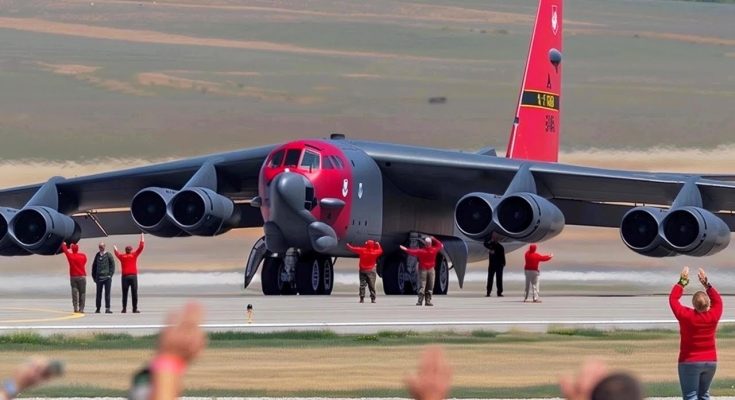The U.S. Air Force is embarking on an ambitious and remarkable mission to ensure the B-52 Stratofortress remains an integral part of its fleet for nearly a century. Initially designed and built in the 1950s, the B-52 has been a cornerstone of the U.S. military’s strategic bomber force. With the Air Force testing newly upgraded B-52s to fly for a full century, it’s clear that this venerable aircraft will continue to serve in multiple roles for decades to come.
A Legacy of Longevity
The B-52’s service record is nothing short of extraordinary. Over its six-decade career, it has undergone numerous modifications and upgrades, allowing it to remain relevant in an ever-evolving technological landscape. From Cold War deterrence to modern-day operations, the B-52 has been involved in a wide variety of missions. Despite being a product of the 1950s, its adaptability and robustness have ensured its place in the skies long past what most aircraft would be expected to endure.
The B-52 was originally designed to carry nuclear bombs, capable of striking targets at intercontinental distances. Over time, however, it has evolved into a versatile platform capable of carrying a wide range of conventional munitions, making it a valuable asset in various conflict scenarios. This flexibility has helped it remain operational, even as newer bombers and technologies have emerged.
Modernization Efforts
In an effort to keep the B-52 relevant for the next several decades, the U.S. Air Force is conducting extensive upgrades. One of the most significant of these upgrades is the replacement of the aircraft’s aging engines. The B-52 originally relied on eight turbojet engines, but this new phase of modernization focuses on replacing them with more efficient, modern turbofan engines. This upgrade will improve fuel efficiency, reduce maintenance costs, and give the aircraft a substantial increase in its range and payload capacity.
Additionally, avionics systems are being modernized to integrate the latest in navigation, targeting, and communication technology. The B-52 is being equipped with new radar and electronic warfare systems that will enhance its ability to operate in contested environments, allowing it to continue performing strategic missions effectively, even as new threats emerge.
The Century-Long Vision
The goal of these upgrades is not just to keep the B-52 flying for another few decades but to ensure that it can remain operational into the 2060s and possibly beyond. This vision of a century of service would make the B-52 one of the longest-serving aircraft in history, surpassing even the longevity of some military jets like the F-4 Phantom, which also had a remarkable service life. The longevity of the B-52 is a testament to its design, engineering, and continued adaptability.
A Strategic Asset for the Future
The decision to extend the B-52’s service life is part of a broader strategy to maintain a flexible and capable bomber force. While new bombers like the B-21 Raider are under development, the B-52 remains a crucial part of the U.S. Air Force’s bomber fleet. Its ability to carry a large payload, conduct long-range missions, and perform a variety of strategic roles makes it a reliable asset that can be used alongside next-generation aircraft in a complementary way.
The B-52’s modernization will ensure that the U.S. maintains a powerful and versatile bomber force for the foreseeable future. As the Air Force continues to test and upgrade these iconic aircraft, the B-52 is poised to remain a symbol of resilience and adaptability, continuing its storied legacy well into the next century.
In the end, the B-52’s ability to fly for a full century is more than just an engineering feat—it’s a testament to the strategic foresight of the U.S. military, ensuring that the aircraft remains a potent force for decades to come.



